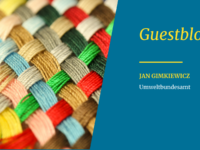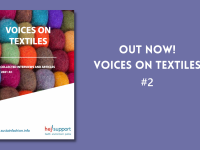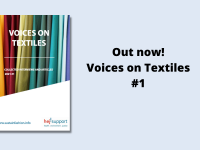Sustainable Clothing – More focus on long use

by Jan Gimkiewicz, Umweltbundesamt (German EPA)
To reduce the environmental impact of the textile sector, focusing on the supply chain and circularity is not enough. Long-lasting garments, measures to extend their useful life, and reduced consumption are also needed. A new study by UBA shows why companies and consumers should place more importance on the longevity of clothing.
Focus on recycling is not enough
To support a more sustainable use of clothing, many activities in recent years have focused on production conditions in the supply chain and the circularity of textiles. These are very important starting points for more sustainability in the textile sector. However, reducing the environmental impacts of apparel production, use and disposal also requires durable apparel, measures to extend useful life and intensify use, and overall reduced consumption. The UBA study “The Role of Durability and Useful Life for a Sustainable Approach to Clothing” brings together the current state of research and practice on the topics of durability and useful life of clothing. The study systematizes currently existing definitions, criteria and measurement standards for durability, presents the influences on the useful life along the life cycle of a garment, shows existing best practice examples and formulates recommendations for policy makers, companies and consumers based on the findings.
There is a lack of a harmonised definition
The terms quality and durability have not yet been uniformly defined in the apparel sector. Depending on the product and the stakeholder, the terms can be interpreted differently. This complicates both communication for companies and orientation for consumers. The EU’s planned eco-design regulations have the potential to close this gap. Because even the current environmental and social labels do not automatically allow conclusions to be drawn about the longevity of a garment.
Has the longevity of our clothing changed?
There is currently no clear data to show that the product-related longevity of clothing has deteriorated in recent decades. However, the increase in apparel production, currently prevailing business models and also statements from the recycling industry about a declining quality of collected goods indicate this. In addition, the useful life of clothing is negatively influenced by existing consumption structures. These include the rapid replacement of clothing in stores, constant consumption incentives, overproduction, low prices and the non-transparent handling of non-sold goods by suppliers.
Need for action for politics, business and consumers
Promoting durability in apparel as a support for the transformation of the entire textile sector towards a circular, resource-efficient and sustainable industry requires the interaction of different groups of stakeholders.
For politics, this means
- the consideration of longevity in particular within the framework of the activities of the EU textile strategy, such as the Eco-design or the Transparency Regulation,
- to create framework conditions (e. g., tax relief for repair) that promote longevity and useful life
- and to fund research on longevity, new business models, and the use phase.
The Economy should
- open up to and test new business models (e.g., lending, repair, etc.),
- integrate circular design strategies into the production process
- and actively use proven longevity as a sales argument.
Consumers could
- consider more often quality and usability when purchasing, and make use of alternative forms of consumption such as swapping, borrowing, or buying second-hand,
- wear clothing for as long as possible and question fashion trends
- and repair or have clothing altered in case of abrasion, defects, and new fashion demands.






